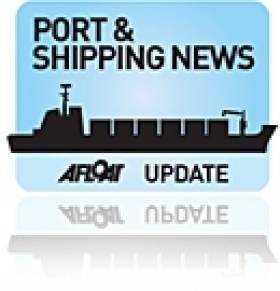Displaying items by tag: EU Customs
Ports & Shipping Review: EU Adopt Custom Plan, Cork of Port Hearing, Ireland-Spain Route Closed, Historic Cruise First for Waterford and much more
#Ports&ShippingReview: Over the last fortnight, Jehan Ashmore has reported on the shipping scene, where the EU adopts a plan to improve customs risk management.
A Port of Cork proposal for a €100m upgrade at Ringaskiddy for a container terminal is to be heard by An Bord Pleanala on 10 September.
Newbuild oil products tanker, Kestral Fisher the second of a pair of 7,072dwt vessels managed by UK based James Fisher Everard docked in Dublin Port.
LD Lines cease operating Ireland-Spain ro-ro ferry services. The 'landbridge' service via France was a historic first to link the nations when launched at the start of this year.
Irish Ferries part of the Irish Continental Group (ICG) release half-year financial report. Since the introduction of ro-pax Epsilon on Welsh and French ferry services, there has been substantial growth from both freight and tourism business.
An historic first for Waterford City Quays, as a record total of three cruiseships bringing more than 900 passengers and 500 crew visited the region.
Manx based Mezeron Freight Services 'classic' coaster cargoship, Silver River (1968/277grt) returned to the Irish Sea following a marine class survey in a Polish shipyard.
Arklow Beacon, the fourth of six 4,800dwt newbuild bulk cargoships, featuring a hull form with 'green' credentials is to be launched at a Dutch yard later this month.





























































